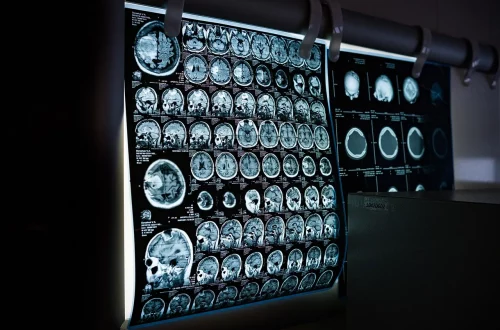
Canagliflozin vs Dapagliflozin: Which is the Better Diabetes Treatment?
The management of diabetes has evolved significantly over the years, with new medications continually being developed to enhance treatment efficacy and improve patient outcomes. Among these advancements, SGLT2 inhibitors have emerged as a pivotal class of medications for managing Type 2 diabetes. These drugs work by promoting the excretion of glucose through urine, thereby lowering blood sugar levels. Canagliflozin and Dapagliflozin are two prominent medications within this class, each with distinct profiles and benefits.
Both of these medications have garnered attention for their ability not only to control blood sugar but also to provide additional cardiovascular and renal benefits. As the prevalence of diabetes continues to rise globally, understanding the nuances of these medications is vital for healthcare providers and patients alike. Factors such as efficacy, side effects, and additional health benefits play crucial roles in choosing the right treatment plan. This article delves into the key differences and similarities between Canagliflozin and Dapagliflozin, shedding light on their mechanisms, advantages, and considerations for use.
Mechanism of Action
Canagliflozin and Dapagliflozin both belong to the sodium-glucose co-transporter 2 (SGLT2) inhibitor class of medications. Their primary mechanism involves inhibiting the SGLT2 protein in the kidneys, which plays a crucial role in glucose reabsorption. Normally, the kidneys filter glucose from the blood, and most of it is reabsorbed back into the bloodstream. By blocking this transporter, these medications promote the excretion of glucose in urine, leading to lower blood glucose levels.
Canagliflozin specifically inhibits the SGLT2 protein, which is predominantly located in the proximal renal tubules. This inhibition results in increased glucose and sodium excretion. The drug helps in not only managing blood sugar levels but also in reducing the risk of heart failure and providing renal protection, which is particularly beneficial for patients with concurrent cardiovascular issues or chronic kidney disease.
On the other hand, Dapagliflozin also targets the SGLT2 protein but has additional effects on the SGLT1 transporter, which is involved in glucose reabsorption in the intestines. This dual-action may contribute to its effectiveness in controlling blood glucose levels and its potential benefits in weight loss. The mechanism of action for both medications highlights their role in providing a multifaceted approach to diabetes management, addressing not just glucose levels but also overall cardiovascular health.
The differences in their mechanisms can influence treatment decisions based on individual patient needs and comorbidities. For instance, Canagliflozin may be more suitable for patients at high risk for heart failure, while Dapagliflozin might be favored for those needing additional weight management support. Understanding these mechanisms equips healthcare professionals with the knowledge to tailor treatment plans effectively.
Clinical Efficacy and Outcomes
When considering Canagliflozin and Dapagliflozin, clinical efficacy is a critical factor in determining which medication may be more appropriate for a patient. Both medications have been shown to effectively lower HbA1c levels, which is a key indicator of long-term blood glucose control. Studies have demonstrated that Canagliflozin can reduce HbA1c levels by approximately 0.5% to 1%, depending on the dosage and patient population. This reduction is significant, especially when considering that even modest decreases in HbA1c can lead to improved health outcomes.
Dapagliflozin has demonstrated similar efficacy, with HbA1c reductions in the same range. However, one of the standout features of Dapagliflozin is its impact on weight loss. Many patients experience modest weight reductions when using Dapagliflozin, which can be an important consideration for those who are overweight or have obesity-related complications.
Beyond glycemic control, both medications have shown cardiovascular benefits. Canagliflozin has been associated with a reduction in the risk of major adverse cardiovascular events, including heart attack and stroke, particularly in patients with established cardiovascular disease. Dapagliflozin, too, has demonstrated favorable outcomes in heart failure patients, reducing the risk of hospitalization due to heart failure.
Moreover, both medications offer renal protective effects. Canagliflozin has been linked to a decreased risk of progression of kidney disease, making it a suitable choice for patients with chronic kidney disease. Dapagliflozin also shows promise in this area, with studies indicating improved renal outcomes for patients taking the medication.
In summary, while both Canagliflozin and Dapagliflozin are effective at lowering blood sugar, their additional benefits in terms of weight management and cardiovascular and renal health make them valuable options in diabetes treatment. The choice between the two often depends on individual patient profiles and specific health considerations.
Side Effects and Considerations
Like all medications, both Canagliflozin and Dapagliflozin come with potential side effects that healthcare providers and patients need to consider. Understanding these side effects is crucial for informed decision-making when it comes to diabetes management.
Common side effects associated with SGLT2 inhibitors include urinary tract infections (UTIs) and genital mycotic infections. The mechanism by which these medications promote glucose excretion can create a more favorable environment for bacterial and yeast growth, leading to these types of infections. It is important for patients to be educated about these risks and to monitor for symptoms so that they can seek timely treatment if needed.
Canagliflozin carries an additional warning regarding the risk of lower limb amputations, particularly in patients with a history of vascular disease. While this risk is relatively low, it is an important consideration, especially for those with a history of foot ulcers or peripheral vascular disease. Patients should be regularly assessed for foot health as part of their diabetes management plan.
Dapagliflozin is generally well-tolerated, but it can also cause dehydration and hypotension, particularly in older adults or those on diuretics. This is due to the diuretic effect of the medication, which increases urine output. Patients should be advised to stay well-hydrated and monitor their blood pressure, especially when initiating therapy.
Another important consideration is the potential for ketoacidosis, a serious condition that can occur with SGLT2 inhibitors, although it is rare. Patients should be educated about the signs and symptoms of ketoacidosis, such as nausea, vomiting, abdominal pain, and difficulty breathing, and they should be encouraged to seek medical attention if they experience these symptoms.
In conclusion, while both Canagliflozin and Dapagliflozin are effective choices for managing Type 2 diabetes, they come with their own profiles of side effects and considerations that must be taken into account. A thorough discussion between the patient and healthcare provider is essential to determine the most appropriate course of treatment.
**Disclaimer:** This article is for informational purposes only and does not constitute medical advice. Always consult a healthcare professional for medical concerns or before starting any new medication.




